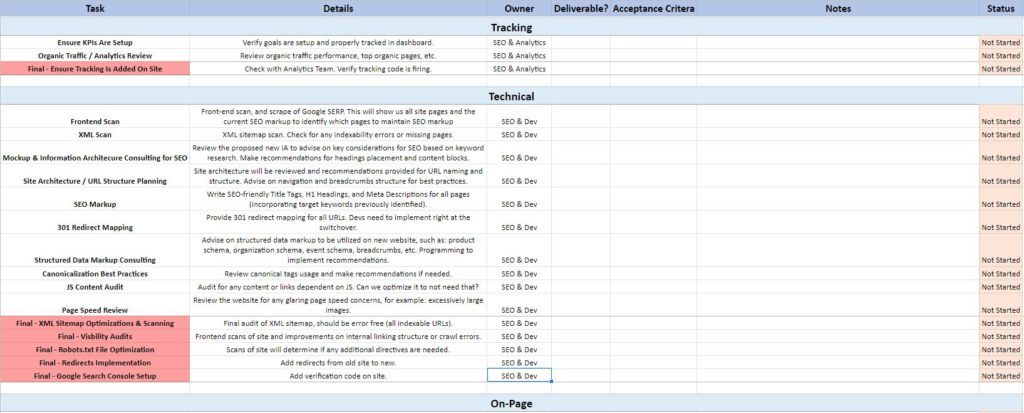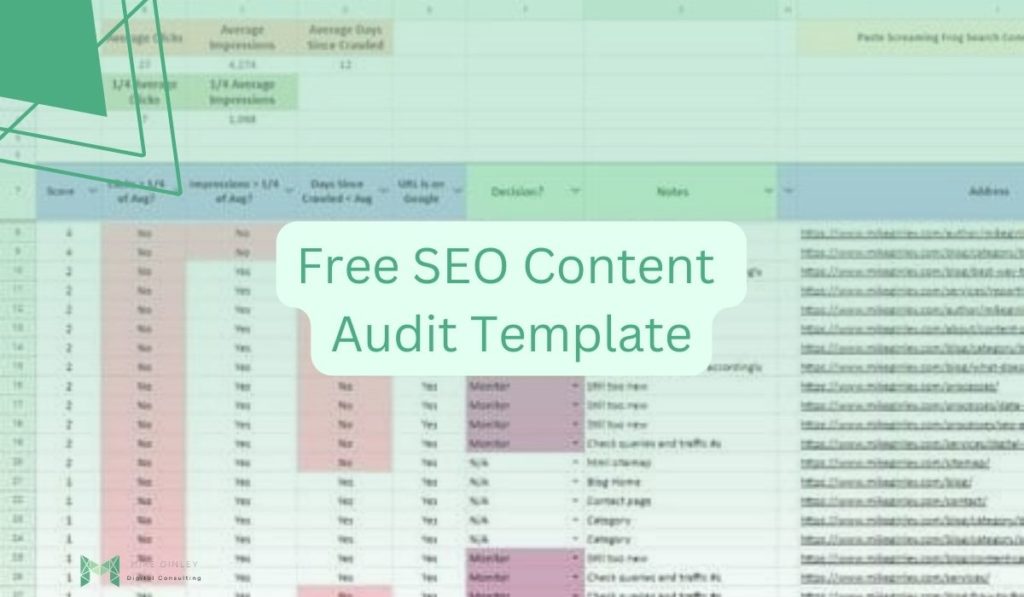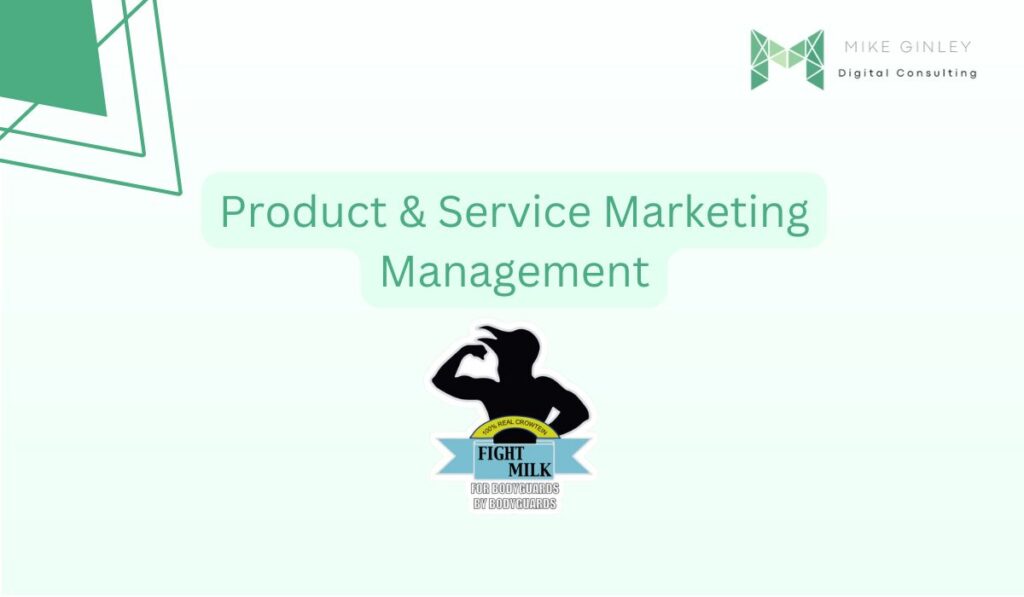TL;DR
- Website migrations are a difficult process where a lot can go wrong, especially with SEO.
- Ensuring that important SEO tasks are done correctly in their different phases can make all the difference for a successful website launch.
- Utilize this Pre / Post Launch SEO Audit Checklist Template to track the important tasks during your website migration.
What is a Pre & Post Launch SEO Checklist?
If you’re planning a website launch or migration, it’s crucial to consider the impact on organic visibility. SEO (Search Engine Optimization) plays a pivotal role in ensuring your website’s success, and overlooking it during such transitions can lead to a drop in rankings, traffic, and revenue. To help you navigate these challenging processes, I’ve created a comprehensive Pre / Post Launch SEO Audit Checklist Template. In this article, we’ll delve into the key factors that impact SEO, the importance of SEO audits, and how to use the checklist effectively.
- How does one go about auditing their site? You can perform an audit manually or use specialized SEO audit tools like SEMrush. A combination of both approaches often yields the best results.
- Should they use tools or a specialist? While tools can identify technical issues, an SEO specialist can provide valuable insights and recommendations tailored to your website’s unique needs. Combining both can be highly effective.
- What is the end goal of an SEO audit checklist? The primary goal is to identify and address issues that could negatively impact your site’s organic visibility. The checklist serves as a roadmap to ensure that all necessary steps are taken to maintain or improve SEO during the launch or migration.
A pre/post SEO launch checklist is a vital tool when migrating or launching a new website. It is an exhaustive list of content & technical tasks that should be done to ensure the process goes smoothly meaning little to no negative impact on organic traffic. Ideally, traffic will increase if all tasks are done correctly, but it is very easy for things to go wrong that could have a drastic effect on organic visibility.
Video Walkthrough – Pre / Post Launch SEO Audit Checklist
Pre / Post Launch SEO Audit Checklist Walkthrough

***Priority Task – If nothing else is done, make sure these are!
My pre-launch SEO checklist aims to ensure that your website is optimized for search engines + users. I have called out tasks that you must complete, but ideally, you spend time on each of them. If you skip it skimp on any there can be some impact on not only organic traffic but overall user experience. Here are some critical items that should be included in a pre-launch SEO checklist:
Tracking
- Ensure KPIs Are Setup – Verify goals are set up and tracked correctly in the dashboard.
- Organic Traffic / Analytics Review – Review organic traffic performance, top organic pages, etc.
- Final – Ensure Tracking Is Added On Site – Check with Analytics Team. Verify tracking code is firing.
Technical
- Frontend Scan – Front-end scan, and scrape of Google SERP. This will show us all site pages and the current SEO markup to identify which pages to maintain SEO markup
- XML Scan – XML sitemap scan. Check for any indexability errors or missing pages.
- Mockup & Information Architecture – Consulting for SEO Review the proposed new IA to advise on key SEO considerations based on keyword research. Make recommendations for headings placement and content blocks.
- Site Architecture / URL Structure Planning – Site architecture will be reviewed and recommendations provided for URL naming and structure. Advise on navigation and breadcrumbs structure for best practices.
- SEO Markup – Write SEO-friendly Title Tags, H1 Headings, and Meta Descriptions for all pages (incorporating target keywords previously identified).
- 301 Redirect Mapping – Provide 301 redirect mapping for all URLs. Devs need to implement right at the switchover.
- Structured Data Markup Consulting – Advise on structured data markup to be utilized on the new website, such as product schema, organization schema, event schema, breadcrumbs, etc. Programming to implement recommendations.
- Canonicalization Best Practices – Review canonical tags usage and make recommendations if needed.
- JS Content Audit – Audit for any content or links dependent on JS. Can we optimize it to not need that?
- Page Speed Review – Review the website for any glaring page speed concerns, for example excessively large images.
- Final – XML Sitemap Optimizations & Scanning – Final audit of XML sitemap, should be error-free (all indexable URLs).
- Final – Visibility Audits – Frontend scans of the site and improvements on the internal linking structure or crawl errors.
- Final – Robots.txt File Optimization – Scans of the site will determine if any additional directives are needed.
- Final – Redirects Implementation – Add redirects from the old site to the new.
- Final – Google Search Console Setup – Add verification code on site.
On-Page
- Keyword Research: Current Rankings – Identify existing rankings for branded terms, non-branded terms, top traffic-driving terms. Define top keywords to maintain in the web design project.
- Keyword Research: Target Keywords – Research keywords for opportunity terms related to core pillars. Identify top movers on the cusp of page 1.
- Keyword Research: Competitor Keywords – Research top branded and non-branded keywords for competitors to identify opportunities and keyword gaps.
- Internal Linking – Review the internal linking and make recommendations to add additional internal linking on top pages.
- Content Review for SEO – Review the content plans for the new website and advise on items such as length of content, appropriate use of headings, appropriate use of target keywords
- Image Optimization – Scan site images and make recommendations for compression and/or image alt text if needed.
Off-Page
- Domain Audits – Audit all domains involved with migration.
- Identify All Local SEO Profiles – Document all profiles to ensure any name or content changes are accounted for.
Post Launch SEO Checklist
Very similar to the above, my post-launch SEO checklist is crucial to a website’s success. Again, key tasks are called out, but I recommend going through all of them. A migration is a chaotic time so tasks can get overlooked. This post-launch audit will allow you to verify that nothing got overlooked. This checklist will ensure that you have a solid base going forward, but can also help create a backlog of work going forward.
Tracking
- Verify Analytics – Ensure tracking is active.
- KPIs & Reporting – Are we accurately tracking all KPIs? What is our reporting cadence? Are we set up for it?
Technical
- Submit New XML Sitemap to Google Search Console – Submit a new sitemap to trigger crawling, and monitor for any errors.
- Initial Crawls – Check frontend and XML for any indexability errors (noindex, blocked by robots, 3xx, 4xx, 5xx).
- Redirects Check – Audit implemented redirects for any errors, and check past ranking URLs for any errors.
- Verify SSL & www. – Check for forced HTTPs as well as www.
- Check New Robots.txt File – Audit for any errors or missing directives.
- Change of Address in Google Search Console – Initiate COA in GSC. Both properties need to be in the same account.
- Verify Crawling/Rendering – Test content in a mobile-friendly test, and ensure Google can access it.
- Check Browser & Mobile Compatibility – Check all popular browsers and rendering.
- Verify Structured Data – Any errors? Is any data missing?
- Check Crawl Depth & Orphans – Are any pages hidden or buried?
- Verify 404 Page – Is it throwing a proper error? Is the page helpful to the user?
- Crawl Error Cleanup – Continuous based on crawls. Check Frontend and XML for any non-indexable errors.
- Visibility Audits – Any crawl errors (3xx, 4xx, 5xx, canonical)? JS-dependent content or links? Blocks or noindex? Excessive redirects or chains?
- Page Speed Audits – Continuous based on data.
- Google Search Console Verification & Maintenance – Constant monitoring of Google Search Console Coverage Report.
On-Page
- Page Title Optimization – Continuous based on data.
- Meta Description Optimization – Continuous based on data.
- Header Optimization – Continuous based on data.
- Internal Linking Additions – Continuous based on new content and rankings.
- Content Creation for Top Pages – Create content for top-ranking pages to allow for consistent rankings and more linking opportunities.
- Content Creation for Gaps – SEO & Content will work together to create a content plan to help answer user queries.
- Content Calendar – Audit for thin content that is not helping the user. Is it out of date? Optimize accordingly. Check for cannibalization across all domains. New topics? Do we have a plan built out?
Off-Page
- Verify Local SEO Profiles – Check Google My Business and other profiles for accuracy.
- Competitor Audits – Content gaps? What are they doing that is working? What can we do to overtake that?
- Backlink Analysis – Audit backlink profile. Anything to disavow? Any domains with opportunities? Any unlinked mentions?
- Local SEO – Continuously monitor and optimize any priority local SEO profiles.
What Comes After The SEO Audit
Many websites complete SEO audits and unfortunately, nothing happens with them. Sometimes it is due to poor planning, others it’s due to a lack of resources or prioritization. One of the most important parts of the SEO audit is making it actionable. After you complete an SEO audit you need to map out each task by priority and expected impact. Having a plan of attack will make it a lot easier to follow through with.
When you optimize these initial areas it does not mean that SEO is over. SEO is a continuous process that needs to evolve based on your user’s needs. Continue to audit your website for technical or visibility issues. Continue to plan out content that solves your user’s problems and is backed by keywords you know users are searching for. Review older content to ensure it is still relevant and up to date.
Understanding the Significance of SEO
SEO is the practice of optimizing your website to rank higher in search engine results pages (SERPs). It encompasses a wide range of strategies and techniques, from on-page optimization to technical fixes and content quality improvements. Why is SEO so critical? Well, here are some compelling reasons:
- Increased Visibility: Higher rankings mean more visibility to potential customers. When your site appears at the top of search results, it’s more likely to be clicked on.
- Traffic Generation: Organic search is a significant source of website traffic. Good SEO brings in high-quality, targeted traffic that is more likely to convert.
- Credibility and Trust: Websites that rank well are often perceived as more trustworthy and credible by users.
- Cost-Effective: Compared to paid advertising, SEO can provide a sustainable, long-term solution for driving traffic and conversions.
The Role of SEO Audits
SEO audits are a crucial part of maintaining and improving your website’s performance. They involve a comprehensive review of your site’s SEO health, identifying issues that may hinder its visibility on search engines. Here’s why SEO audits matter:
- Issue Identification: Audits uncover issues such as broken links, duplicate content, slow page load times, and more. Identifying these problems is the first step in fixing them.
- Performance Improvement: Once issues are identified, you can take steps to address them, which can lead to significant improvements in rankings and traffic.
- Competitive Advantage: Regular audits help you stay ahead of competitors by ensuring your site is in top shape and adheres to the latest SEO best practices.
How I Help
As an SEO freelancer, I can assist you in conducting SEO audits for your website. My expertise and experience can provide you with a deeper understanding of your site’s SEO health and guide you in making informed decisions. If you need help with SEO audits, feel free to reach out to me for a comprehensive evaluation and tailored recommendations.
An SEO Audit Checklist is an invaluable tool for anyone embarking on a website migration or redesign. It ensures that your website’s organic visibility remains intact or even improves during these critical transitions. SEO is not a one-time effort but an ongoing process, and audits are essential checkpoints to maintain your website’s performance in the ever-evolving digital landscape.
Remember, the success of your website isn’t just about its design and content; it’s also about how easily users can find it. Incorporating SEO into your website launch strategy is a proactive step towards securing a strong online presence.
I am mainly using this site as a portfolio to create content that can help others in the industry. I have learned so much from people in this field and I want to do my part to help as well. I will continue to create processes and free templates that can hopefully help anyone in SEO and Digital Marketing. If there is anything you are looking for or have questions about please reach out to me on my Contact page or on Twitter!
Pre & Post Launch SEO Resources
- The Semrush Website Migration Checklist – SEMrush
- The Website Migration Checklist: How To Safeguard Your SEO While Updating Your Site – Botify
- The Website Migration Guide: SEO Strategy, Process, & Checklist – Moz
- How to Conduct a Professional Local SEO Audit – BrightLocal
Who To Follow
Interesting/smart accounts you should be following on Twitter:



